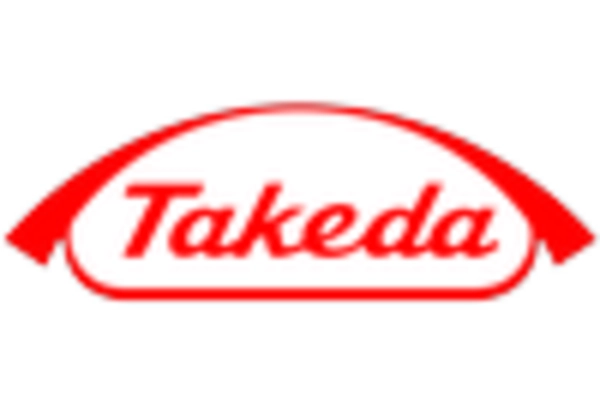Rising Healthcare Expenditure
The increasing healthcare expenditure in the US is a significant driver for the malabsorption syndrome market. As healthcare budgets expand, there is a greater focus on improving patient care and access to specialized treatments. This trend is evident in the growing investment in research and development for new therapies and diagnostic tools aimed at addressing malabsorption syndromes. In 2025, healthcare spending in the US is projected to exceed $4 trillion, which could lead to enhanced funding for malabsorption-related research. This influx of resources is likely to stimulate innovation and improve treatment options, thereby positively impacting the malabsorption syndrome market.
Advancements in Diagnostic Technologies
Technological innovations in diagnostic tools are transforming the malabsorption syndrome market. Enhanced imaging techniques, such as MRI and CT scans, along with advanced laboratory tests, are facilitating earlier and more accurate diagnoses. These advancements not only improve patient outcomes but also drive market growth by increasing the number of diagnosed cases. The introduction of non-invasive testing methods is particularly noteworthy, as they reduce the need for invasive procedures, making diagnosis more accessible. As a result, This market is expected to expand, with a compound annual growth rate (CAGR) of approximately 8% over the next five years, reflecting the impact of these technological advancements.
Growing Demand for Nutritional Supplements
The increasing awareness of nutritional deficiencies associated with malabsorption syndromes is driving the demand for dietary supplements in the malabsorption syndrome market. Patients often require specialized nutritional support to manage their conditions effectively. The market for nutritional supplements is projected to reach $500 million by 2026, as more individuals seek products that can help mitigate the effects of malabsorption. This trend is further fueled by the rise of health-conscious consumers who are more inclined to invest in their well-being. Consequently, manufacturers are focusing on developing innovative supplements tailored to the needs of those with malabsorption issues, thereby enhancing the overall market landscape.
Enhanced Patient Education and Support Programs
The establishment of patient education and support programs is playing a pivotal role in the malabsorption syndrome market. These initiatives aim to inform patients about their conditions, treatment options, and dietary management strategies. Increased patient knowledge can lead to earlier diagnosis and better adherence to treatment regimens, ultimately improving health outcomes. Organizations and healthcare providers are increasingly investing in these programs, recognizing their potential to empower patients. As a result, the malabsorption syndrome market is likely to benefit from a more informed patient population, which may drive demand for diagnostic and therapeutic solutions.
Increasing Prevalence of Gastrointestinal Disorders
The rising incidence of gastrointestinal disorders in the US is a crucial driver for the malabsorption syndrome market. Conditions such as celiac disease, Crohn's disease, and irritable bowel syndrome are becoming more prevalent, leading to a higher demand for diagnostic and therapeutic solutions. According to recent estimates, approximately 1 in 100 individuals in the US are affected by celiac disease alone. This growing patient population necessitates increased awareness and improved treatment options, thereby propelling the malabsorption syndrome market forward. As healthcare providers become more vigilant in diagnosing these conditions, the market is likely to experience significant growth, with a projected increase in market value reaching $1.5 billion by 2027.

















Leave a Comment